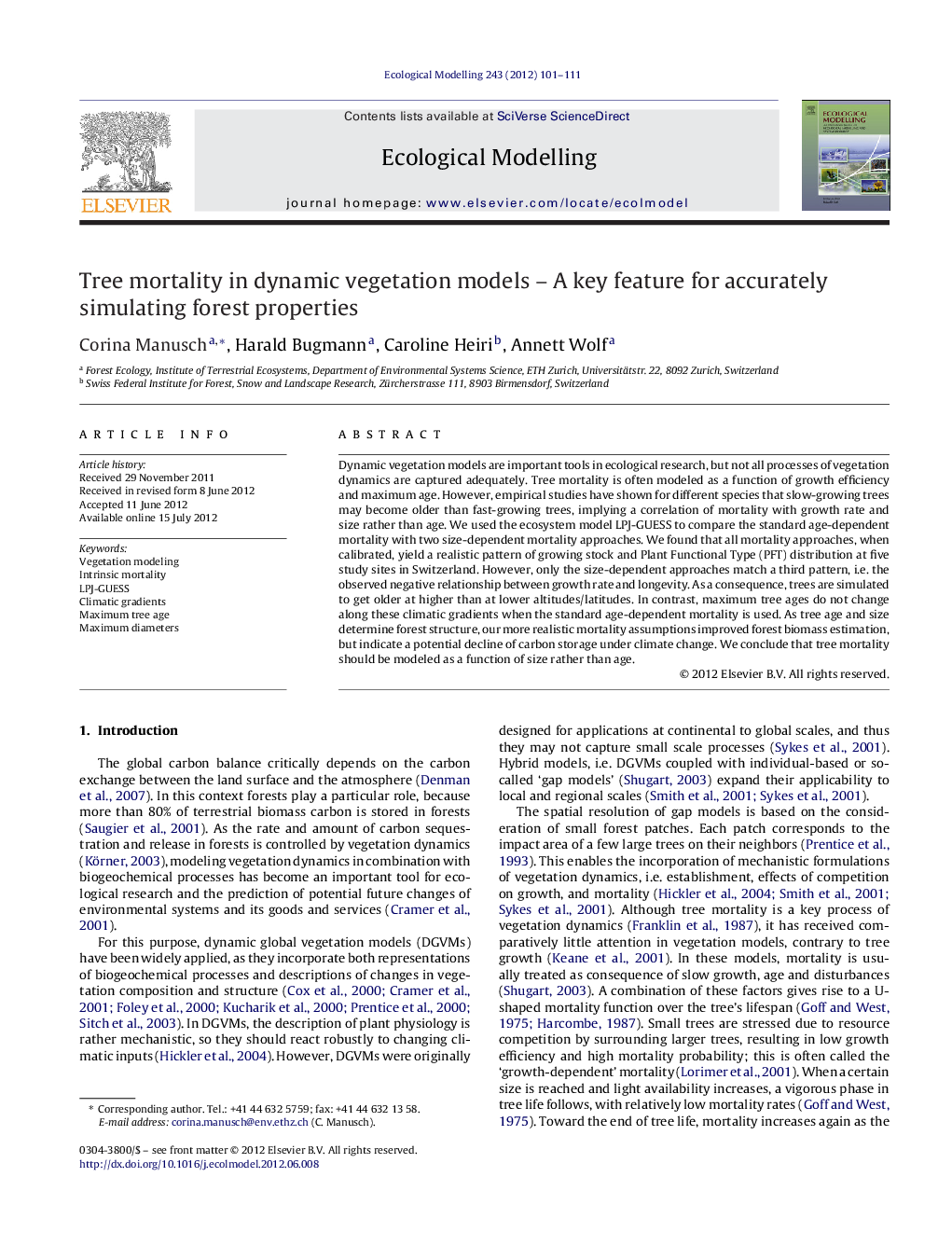| Article ID | Journal | Published Year | Pages | File Type |
|---|---|---|---|---|
| 4376338 | Ecological Modelling | 2012 | 11 Pages |
Dynamic vegetation models are important tools in ecological research, but not all processes of vegetation dynamics are captured adequately. Tree mortality is often modeled as a function of growth efficiency and maximum age. However, empirical studies have shown for different species that slow-growing trees may become older than fast-growing trees, implying a correlation of mortality with growth rate and size rather than age. We used the ecosystem model LPJ-GUESS to compare the standard age-dependent mortality with two size-dependent mortality approaches. We found that all mortality approaches, when calibrated, yield a realistic pattern of growing stock and Plant Functional Type (PFT) distribution at five study sites in Switzerland. However, only the size-dependent approaches match a third pattern, i.e. the observed negative relationship between growth rate and longevity. As a consequence, trees are simulated to get older at higher than at lower altitudes/latitudes. In contrast, maximum tree ages do not change along these climatic gradients when the standard age-dependent mortality is used. As tree age and size determine forest structure, our more realistic mortality assumptions improved forest biomass estimation, but indicate a potential decline of carbon storage under climate change. We conclude that tree mortality should be modeled as a function of size rather than age.
► We model intrinsic tree mortality as a function of size instead of age. ► Size-dependent mortality yields more realistic results, e.g. growing stock or PFTs. ► Only size-dependent mortality shows observed negative growth/longevity correlation. ► Trees are simulated to get older at higher than at lower altitudes/latitudes. ► Accelerated growth due to climate change speeds up size-dependent mortality.
